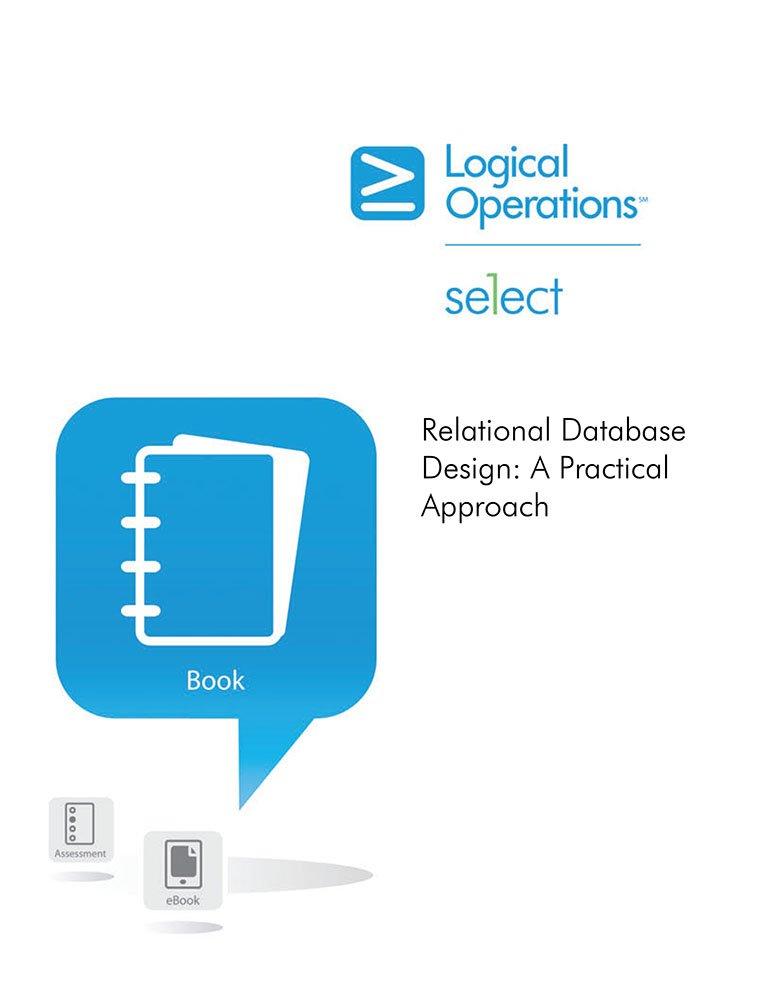Answered step by step
Verified Expert Solution
Question
1 Approved Answer
draw the completed ERD from sql provided below: - - nasa.sql - - - - - - This database describes the United States space program,
draw the completed ERD from sql provided below: nasa.sql
This database describes the United States space program, prior to the
space shuttle.
If you are concerned that NASA history is not relevant
to a Businessoriented student, you are wrong: Forom a business perspective
these are just projects, and the astronauts are "just" workers assigned to
one or more tasks ie missions
Prior to the shuttle, NASA ran five different "manned" space projects:
Project Mercury : The six missions of this project carried a
single astronaut, the 'pilot'. The first two missions were suborbital
missionType SO and four missions that took the astronauts into
Earth orbit missionType EO
Project Gemini : Each of the manned missions of this
program carried two astronauts, the 'Commander' and 'Pilot', into Earth
orbit missionType EOThe first manned mission was number the
first two were unmanned tests.
Project Apollo : Each of these missions carried three
astronauts, the 'Commander', 'Command Module Pilot', and 'Lunar Module
Pilot. Most missions used two spacecraft, the 'Command Service Module'
craftTypeCSM and the 'Lunar Module' craftTypeLM In most
missions missionType LL the Command Module Pilot would stay in
lunar orbit in the CSM while the Commander and Lunar Module Pilot
descended in the LM Apollo was the first mission to land on the
moon. Earlier missions were test flights. Apollo did not fly
hence the missionType of this mission has been left null The crew of
Apollo was killed while testing the spacecraft on the launch pad.
The first manned Apollo mission was Apollo It tested a CSM in earth
orbit missionType EO and did not have a lunar module. Apollo
tested a CSM in lunar orbit missionType LO and also did not have
a lunar module. Apollo tested a LM in Earth orbit, and Apollo
tested a LM in lunar orbit. From Apollo onward, all missions landed
on the moon missionType LL with one exception, Apollo which
aborted its mission on the way to the moon, and looped round the moon
without entering orbit a "Fly By missionTypeLF
Project Skylab : Skylab was the launch of the first US space
station, in Earth orbit. Each of Skylab missions to took a
threeman crew to the Skylab station in an Apollo CSM The third member
of each crew was called the scientist not Lunar Module Pilot
Project ApolloSoyuz : A threeman crew in an Apollo CSM docked
with a Russian Soyuz spacecraft in Earth orbit. The third member of
that crew was called the Docking Module Pilot not Lunar Module Pilot
DROP table NASAAssigned;
DROP table NASASpaceCraft;
DROP table NASAMission;
DROP table NASAAstronaut;
DROP table NASAProject;
Create table NASAProject
projectName char
CONSTRAINT NASAProjectsPK PRIMARY KEY projectName
;
Create table NASAAstronaut
astroNo integer,
astroName char
birth integer,
death integer,
CONSTRAINT NASAAstronautPK PRIMARY KEY astroNo
;
Create table NASAMission
projectName char
missionNo integer,
missionType char
launchYear integer,
launchMonth integer,
launchDay integer,
days integer,
hours integer,
minutes integer,
description char
CONSTRAINT NASAMissionPK PRIMARY KEY projectName missionNo
CONSTRAINT NASAMissionFK FOREIGN KEY projectName REFERENCES NASAProject
;
Create table NASAAssigned
projectName char
missionNo integer,
astroNo integer,
role char
CONSTRAINT NASAAssignedPK PRIMARY KEY projectName missionNo, astroNo
CONSTRAINT NASAAssignedFKMission FOREIGN KEY
projectName missionNo REFERENCES NASAMission,
CONSTRAINT NASAAssignedFKAstronaut FOREIGN KEY
astroNo REFERENCES NASAAstronaut
;
Create table NASASpaceCraft
projectName char
missionNo integer,
craftType char
craftName char
CONSTRAINT NASASpaceCraftPK PRIMARY KEY projectName missionNo, craftType
CONSTRAINT NASASpaceCraftFK FOREIGN KEY
projectName missionNo REFERENCES NASAMission
;
INSERT INTO NASAProject VALUESMercury;
INSERT INTO NASAProject VALUESGemini;
INSERT INTO NASAProject VALUESApollo;
INSERT INTO NASAProject VALUESSkylab;
INSERT INTO NASAProject VALUESApolloSoyuz';
Insert into NASAAstronaut VALUES'Aldrin, Buzz',NULL;
Insert into NASAAstronaut VALUES'Anders, William',NULL;
Insert into NASAAstronaut VALUES'Armstrong, Neil',NULL;
Insert into NASAAstronaut VALUES'Bean, Alan',NULL;
Insert into NASAAstronaut VALUES'Borman, Frank',NULL;
Insert into NA
Step by Step Solution
There are 3 Steps involved in it
Step: 1

Get Instant Access to Expert-Tailored Solutions
See step-by-step solutions with expert insights and AI powered tools for academic success
Step: 2

Step: 3

Ace Your Homework with AI
Get the answers you need in no time with our AI-driven, step-by-step assistance
Get Started


